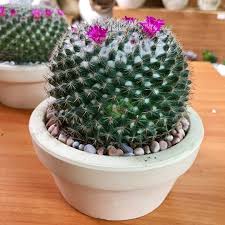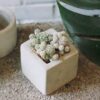The Integration of Art and Feng Shui in Interior Design: Creating Harmonious Spaces

In the world of interior design, creating spaces that are both aesthetically pleasing and emotionally fulfilling is a constant pursuit. Whether for residential, commercial, or professional environments, the goal is often to design areas that are not only functional but also radiate positive energy, comfort, and tranquility. One powerful way to achieve this balance is by combining art and Feng Shui principles in interior design. This fusion has gained popularity as more people seek to create harmonious spaces that nurture well-being, inspire creativity, and promote balance in their daily lives. In this article, we will explore the integration of art and Feng Shui in interior design, how these two elements complement each other, and how they can work together to create environments that promote positivity, creativity, and prosperity.
What is Feng Shui?
Feng Shui is an ancient Chinese practice that focuses on the arrangement of physical spaces to enhance the flow of energy, or “Qi” (pronounced “chee”). The belief behind Feng Shui is that the way a space is designed and arranged can have a profound impact on a person’s health, happiness, and success. It is based on the idea that the environment around us affects our lives, and by adjusting the layout of furniture, decor, and colors, we can cultivate an environment that fosters positive energy and balance.
Feng Shui principles include considerations of the five elements (wood, fire, earth, metal, and water), the Bagua map (a tool used to analyze the energy flow in a space), and the proper placement of furniture and objects to enhance the flow of Qi. By following these guidelines, interior designers can create spaces that support various aspects of life, such as relationships, wealth, health, and career.
The Role of Art in Interior Design
Art has always been a powerful medium for expressing emotions, ideas, and beauty. It enhances the visual appeal of a space and can deeply influence the mood and atmosphere of a room. Art brings life to a room by adding color, texture, and focal points that inspire conversation and reflection. Whether it’s a painting, sculpture, or even a simple decorative object, art has the ability to transform an otherwise neutral space into something that feels personal, creative, and inspiring.
In interior design, art is not just about decoration—it’s about creating an emotional connection with the space. It can evoke feelings of calm, joy, or excitement, and can play an important role in shaping the overall vibe of a room. Art also complements the color scheme, furniture, and layout of a space, making it a key element in establishing a cohesive design.
How Art and Feng Shui Work Together
While art and Feng Shui might seem like two distinct concepts—one rooted in ancient traditions and the other in contemporary aesthetics—they can work together harmoniously to enhance the energy of a space. The combination of these two elements can create a balance of visual appeal and positive energy, helping to promote a sense of well-being and harmony. Here’s how art and Feng Shui principles complement each other:
1. Art as a Reflective Element of Feng Shui
In Feng Shui, every object in a space is thought to contribute to the overall energy or Qi. Art, as one of the most visually impactful elements in interior design, plays a critical role in influencing the energy of a room. When selecting art for a space, it is important to choose pieces that align with the desired energy or intention of the room. Feng Shui encourages the use of art that reflects positivity, abundance, and harmony.
For example, in a living room or dining area (which is often associated with family, relationships, and prosperity), choosing artwork that depicts harmonious scenes—such as flowing water, blooming flowers, or peaceful landscapes—can enhance the flow of positive energy. On the other hand, images of conflict, chaos, or negativity are believed to disrupt the flow of Qi and may create a sense of unease or tension.
2. Balancing the Five Elements Through Art
In Feng Shui, the five elements—wood, fire, earth, metal, and water—are essential for creating balance and harmony in a space. These elements can be represented through various design features, including color, shape, material, and artwork. Art offers a powerful tool for incorporating these elements into a room.
For instance:
- Wood can be represented through art that features natural landscapes, trees, or plants. These types of artworks can bring vitality and growth energy into a space.
- Fire can be symbolized through artwork with warm colors (reds, oranges, and yellows), or abstract designs that evoke passion and energy. Art featuring flames or sunsets can also represent fire in Feng Shui.
- Earth is associated with stability and grounding energy. Artwork featuring mountains, stones, or earthy tones (browns, yellows, and neutrals) can support this energy.
- Metal can be incorporated through art that includes metallic finishes, geometric shapes, or clean lines. Art that symbolizes precision and structure can help enhance mental clarity and focus.
- Water can be represented by artwork that depicts rivers, lakes, or oceans. Blue, black, and dark tones can also symbolize the water element, bringing calmness, flow, and tranquility.
By choosing the right art for each space, designers can achieve a harmonious balance of these elements, which in turn nurtures the positive flow of Qi.
3. Art as a Tool for Focusing Energy in Specific Areas
Feng Shui involves using the Bagua map to analyze the energy in different areas of a home or business. Each section of the Bagua map corresponds to a specific aspect of life, such as wealth, health, love, and career. Art can be used strategically to focus energy on these areas.
For example:
- In the wealth corner (the far left corner of a room), placing artwork that depicts abundance, prosperity, or growth—such as images of money trees or blooming plants—can encourage the flow of wealth and financial success.
- In the love corner (the far right corner), artwork that features romantic, peaceful scenes or images of pairs, such as two birds or flowers, can enhance relationship energy and attract love.
- In the health and family corner (the center), art that symbolizes well-being, harmony, and support—such as family portraits or peaceful nature scenes—can strengthen the energy of the family unit and encourage good health.
By aligning art with specific areas of the Bagua map, Feng Shui practitioners can direct energy to influence various aspects of life in a positive and balanced way.
4. The Impact of Color in Art and Feng Shui
Color is one of the most powerful tools in both Feng Shui and interior design. It can greatly affect mood, emotions, and energy flow in a space. In Feng Shui, different colors are associated with specific elements, emotions, and areas of life. Art provides an opportunity to introduce these colors in a meaningful way.
- Red (Fire element) is often used to symbolize passion, vitality, and good fortune. It is an energizing color that can stimulate action and excitement.
- Blue (Water element) represents calmness, serenity, and wisdom. It can help create a peaceful and relaxing atmosphere.
- Green (Wood element) symbolizes growth, renewal, and vitality. It can bring a sense of calm and balance to a space.
- Yellow (Earth element) represents stability, nourishment, and creativity. It can enhance a feeling of warmth and support.
- White (Metal element) represents purity, clarity, and focus. It can bring a sense of clarity and simplicity to a room.
By carefully selecting artworks that incorporate these colors, interior designers can use art to evoke specific energies and enhance the desired atmosphere in a room.
5. Art and Feng Shui in Different Types of Spaces
Different areas of a home or workplace will benefit from different types of art and Feng Shui applications. Here’s how art and Feng Shui can work together in various types of spaces:
Living Rooms
Living rooms are where families gather and entertain guests, making them a space for social connection, relaxation, and balance. Art in the living room should evoke warmth, comfort, and harmony. Choosing pieces that represent the earth or water elements can create a calm, welcoming environment. Additionally, artwork that celebrates family, community, and unity can strengthen relationships.
Bedrooms
The bedroom is a sacred space for rest, intimacy, and relaxation. Art in the bedroom should promote restful energy and romantic harmony. Gentle, calming artwork—such as serene landscapes, peaceful animals, or soft abstract pieces—can help create an environment conducive to relaxation and restful sleep.
Offices and Workspaces
Workspaces benefit from art that enhances focus, productivity, and creativity. Geometric or abstract art that features clean lines and bright, energizing colors can help stimulate mental clarity and creativity. In Feng Shui, it’s also important to have artwork that supports career success, such as pieces that evoke ambition, power, and growth.
Conclusion
The integration of art and Feng Shui in interior design is a powerful way to create spaces that promote balance, well-being, and positive energy. Through thoughtful selection of art, careful attention to the five elements, and alignment with the principles of Feng Shui, designers can create environments that not only look beautiful but also foster a harmonious flow of energy. By combining the aesthetic appeal of art with the wisdom of Feng Shui, it is possible to design spaces that inspire creativity, attract prosperity, and nurture personal growth. Whether for a home, office, or business, the fusion of art and Feng Shui creates an environment that supports a balanced and fulfilling life.

